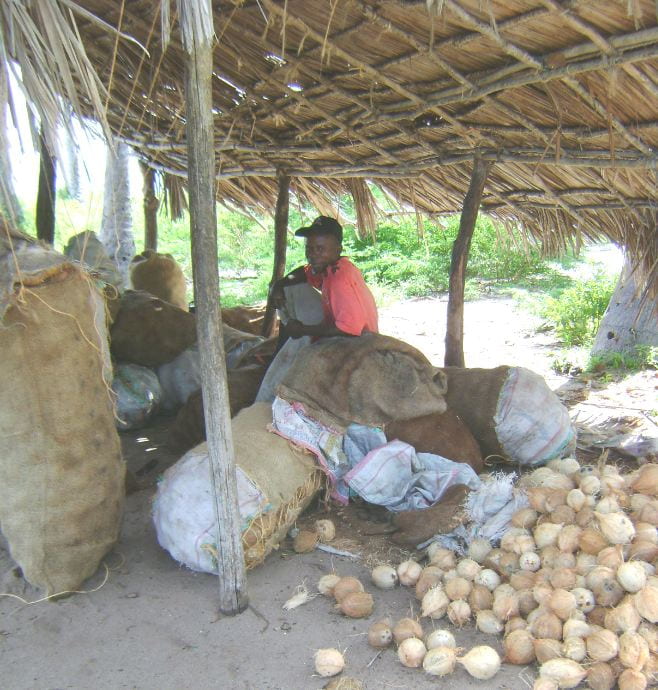in 2002-4

Mafia Island has long had a mixed economy dependent both upon subsistence and cash farming. The north of the island, where more bushland is available, is more heavily weighted towards subsistence farming and people grow dry and wet rice, cassava, beans, peas, corn, tomatoes and other crops.
Most of the southern half of the island is planted up with coconut and cashew-nut trees, which produce Mafia’s longest-standing cash crops. Both coconuts and the smaller cashew-nut crop are exported directly to the markets in Dar es Salaam. The price of both crops has fluctuated in recent years
Hydrocarbons
It has been clear for some time that the Mafia Channel and Island indicate a considerable hydrocarbon potential. By 2002 oil companies were spending over $293million on oil and gas exploration in Tanzania.
While it is often considered that the discovery of oil could solve many of Tanzania’s problems of chronic poverty, a warning note is sounded by Giles Foden in his 2003 article ‘They made a mess of Nigeria…’
References and further reading on Mafia Island economy
- Caplan, Pat. 1981: “Development Policies in Tanzania: Some Implications for Women” in The Journal of Development Studies 17, 3: 98-108 (also published in N. Nelson (ed.) African Women in the Development Process London: Frank Cass, 1981)
- Caplan, Pat 1995. Food, Health and Fertility Further Investigated with Particular Reference to Gender: a Report on Fieldwork on Mafia Island, Tanzania, June-August 1994. Report present to the Tanzania National Scientific Research Council, July 1995 (38pp.)
- Caplan, Pat, 2003. ‘Struggling to be modern: recent letters from Mafia Island’. In P. Caplan and F. Topan (eds.) Swahili Modernities. Lawrenceville, NJ.: Africa World Press.
- Van Spengen, Wim, 1979. ‘Structural Characteristics of Underdevelopment in the Mafia Archipelago: an Historical Analysis’, Cahiers d’Etudes Africaines, XX (3): 331-53.
- Walley, Christine, 2004. Rough Waters: nature and development in an East African Marine Park. Princeton and Oxford: Princeton University Press.